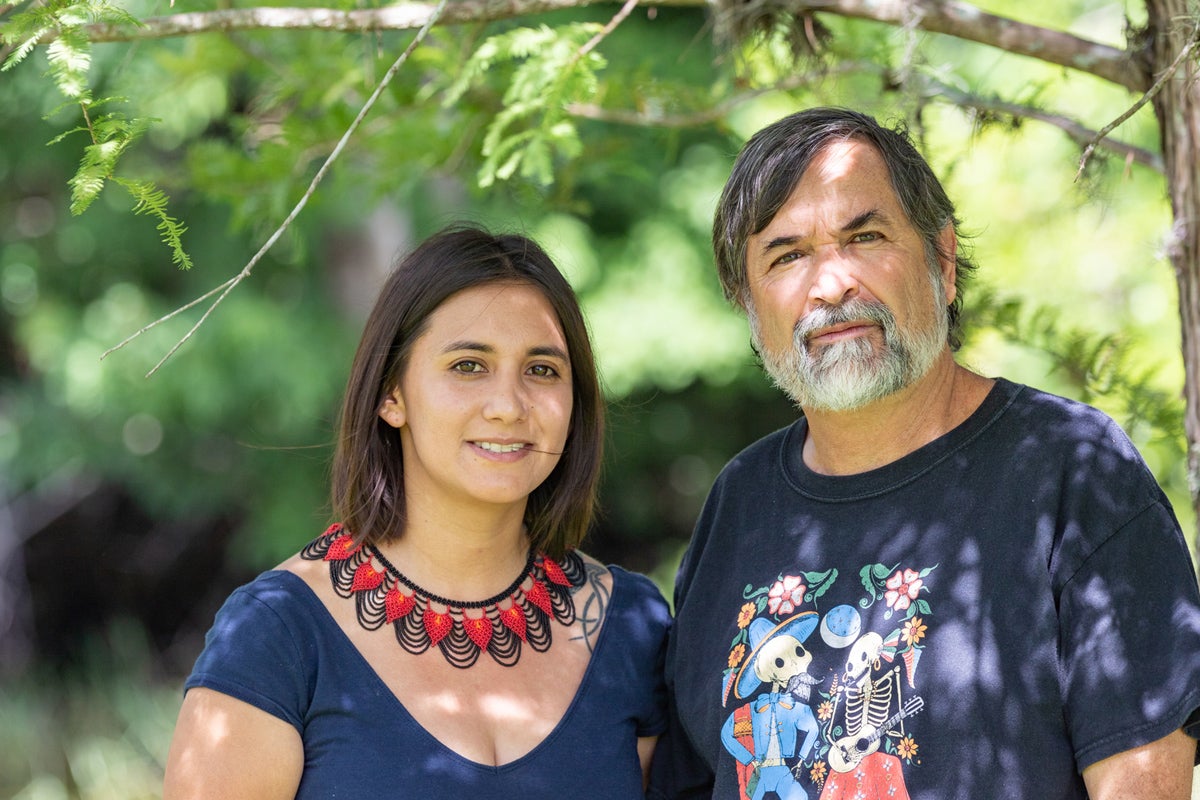UCF student Veronica Urgiles has just helped describe two new frog species she discovered in Ecuador and named one of them after one of her professors.
“Frogs are by far my favorite group,” says Urgiles, who is pursuing a master’s degree in biology. “So getting to describe and name two of them is terrific. I have been looking at these frogs for years know, so going over the whole process of observing them in their habitats and then analyzing them and comparing them under the microscope, to finally naming them is a long, but very satisfying journey.”
Urgiles and the international team of researchers who made the discoveries just published their findings in the journal ZooKeys.
Urgiles, a 2017 Fulbright scholar and the lead author, says she chose UCF for its integration of genetics and genomics in biodiversity research and the emphasis on real-world application. She moved to the United States from Ecuador in 2017 to pursue her master’s degree and has been working in the lab of biology Professor Anna Savage, who describes her as a talented young scientist.
Urgiles named the frog after Professor Pedro Quintana-Ascencio, who has worked at UCF since 2003.
“He is fantastic,” Urgiles says. “When I first got to UCF, I took his biostatistics class. Turns out he is Latino too, and he’s been working on research in my country for years. I wanted to honor all his years as a professor at UCF and in Ecuadorean colleges and his efforts to help design conservation studies in endangered ecosystems in Ecuador.”
Thanks to that dedication, one of the new frogs will forever be known as Pristimantis quintanai.
Quintana-Ascencio says he was surprised.
“This is awesome,” he says. “This is one of the highest honors I have ever received. I am very happy.”
The professor has been working on conservation and management of plant species in the general region of Ecuador that is Urgiles’s focus. They ran into each other in Ecuador one summer and he had an opportunity to watch her research in action.
“It always has been a pleasure to see how committed she is to her work and the quality of the research she has developed,” he says. “This research will be critical to better understand the evolution of amphibians and at the same time that will help to prioritize areas for conservation in the region.”
In 2017, Urgiles identified the first new species. She, Savage and the rest of the team identified the second species — Pristimantis cajanuma — in 2018. Both were found in the Paramo and montane forest of the southern Ecuadorean Andes.
The frogs are tiny, measuring .8 inch. Pristimantis quintanai females are brown and black and Pristimantis cajanuma are green and black, both easily blending into the foliage. They have a distinct call that is sharp and continuous, sounding like tik-tik-tik-tik.
“One of the things that I found most interesting about these guys is that they don’t have metamorphosis like a regular frog, but instead they develop entirely inside eggs that adult females deposit in the ground,” Urgiles says. “They really don’t need water bodies for their development. Both of the new frog species inhabit high elevation ecosystems in the mountain range over 8,000 feet, so even though we are right there in the equator, it’s very cold and windy most of the year.”
Determining the frogs were indeed an entirely new species was painstaking work.
Urgiles examined DNA samples collected by the international team back in Savage’s lab at UCF, generated genetic sequences, and constructed the phylogenetic analysis. Other team members also worked the morphological diagnosis and comparisons with other frogs and an acoustic analysis of the frogs’ calls.
“In these analyses, we use all of the genetic similarities and differences we find to build phylogenetic trees, and when we find that a ‘branch’ on the ‘tree’ has strong support and contains all of the individuals that share the same morphological characteristics, then we have good evidence to describe it as a new species,” says Savage, whose expertise includes describing species diversity based on molecular analyses. “We used this method, along with vocalization and location data, to conclude that the two species we describe are distinct from any other species that have ever been characterized.”
Ecuador is a country rich in biodiversity. In 2018, 13 new species of frogs were documented in the tropical Andes of Ecuador, and so far in 2019 five new frogs have been documented.
The work is critical because of the vast diversity that has yet to be discovered in the tropical Andes of South America, Urgiles says.
“I was born and raised in the world’s most biodiverse hotspot,” Urgiles says. “So all the time I was surrounded by mountains and forests and amazing animals. In college, I enrolled in biology because I knew I wanted to be a scientist, and I also knew I wanted to understand a lot more about the nature around me.”
There are potentially thousands of new plants and animals in the area that may hold the key to other discoveries. It’s important to know what is there, to better understand the threats to habitat loss and disease. Then conservation methods can be established to protect the resources.
Urgiles hopes to finish her thesis by next summer and then continue research to help understand and preserve the frogs and other inhabitants of the tropical Andes.
Savage says the work with Urgiles has been a true collaboration.
“Science is a truly collaborative endeavor because it typically requires the integration of several specialized skill sets to produce novel and meaningful insights,” Savage says. “Each of the graduate students I mentor has brought their own specialized knowledge and abilities to the projects we work on. She is an extreme example of this for me, because she came to UCF with a ton of expertise about a region (Ecuador), group of frogs (pristimantis), and type of research goal (resolving taxonomy) that I had never worked on before. While I have been able to contribute to her project by helping with the molecular component of the analyses, I think I’ve learned far more from her than she has from me.”
The work has allowed Savage to build new collaborations with South American scientists and expand her disease-ecology research into Ecuador, which might not have happened it not for this student, Savage said.
Other members of the team include: Paul Szekely from the EcoSs Lab at Universidad Técnica Particular de Loja in Ecuador; Diana Szekely from Ovidius University of Constanța in Romania, Nicholas Christodoulides, who is pursuing a conservation biology doctorate from UCF, and Juan C. Sanchez-Nivicela from Universidad Nacional de Colombia, Bogotá.
Field work for the study was supported through a National Geographic grant.





